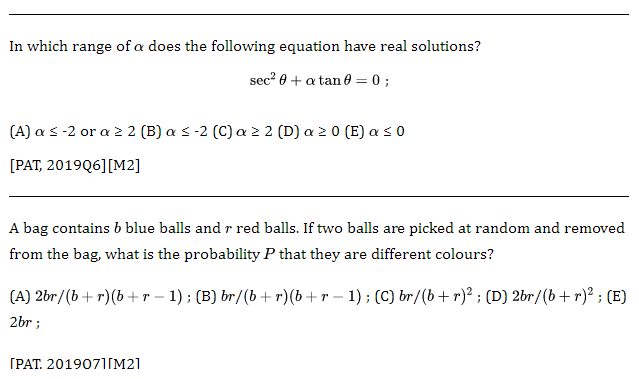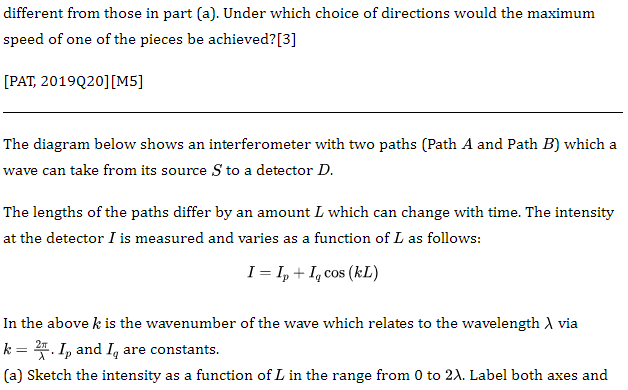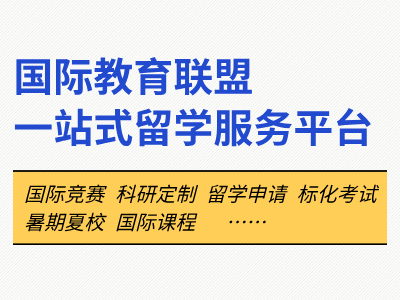考试简介
什么是牛津PAT物理考试?PAT考试的全称是Physics Aptitude Test(物理能力测试),是牛津大学对申请就读工程科学、材料科学和物理等本科或本硕专业的学生进行的测试。
需考专业
哪些专业需要考PAT?牛津大学所有工程科学专业、材料科学专业和物理专业都要求学生在面试前参加PAT考试,相关专业包括:
| Courses | 专业名称 | UCAS代码 |
| Engineering Science | 工程科学 | H100 |
| Biomedical Engineering | 生物医学工程 | H811 |
| Chemical Engineering | 化学工程 | H800 |
| Civil Engineering | 市政工程 | H200 |
| Electrical Engineering | 电气工程 | H620 |
| Information Engineering | 信息工程 | H630 |
| Mechanical Engineering | 机械工程 | H300 |
| Materials Science | 材料科学 | FJ22 |
| Physics | 物理 | F303 |
| Physics and Philosophy | 物理与哲学 | VF53 |
关键日期
牛津PAT 2021考试关键日期
| 2021年09月01日 | 报名开始 |
| 2021年10月15日 | 常规报名截止 |
| 2021年11月初 | PAT考试日[1] |
| 2021年11月底、12月初 | 面邀通知[2] |
| 2022年01月 | 成绩查询[3] |
[1] 官方保留变更考试日期的权利,请留意官方最新消息。
[2] 牛津大学以电子邮件形式通知符合要求的考生参加面试,也即俗称的“面邀”。
[3] 成绩不对外公布,学生需向学院写邮件查询成绩。
报名方式
牛津PAT考试如何报名?
考生需通过授权考试中心报名参加PAT考试,
- 考生所在学校是授权考试中心,则可通过学校报名和参加PAT考试。
- 学校不是授权考试中心,可以社会考生的身份登录BC官网报名。
- 还有部分城市有校外机构,可以代社会考生报名并组织PAT考试。
报名时需提交给考试中心以下信息:
- 姓名、性别、出生日期及UCAS编号
- 所申请大学的名称、专业及专业代码
- 如因身体原因需要特殊照顾,需一并提交相关证明材料
考试形式
牛津PAT考试形式是怎样的?
答题方式
笔试
考试时长
2小时
考试题型
选择题和简答题
计分方式
试卷满分为100分,每道题分值不固定。从2017年起,选择题一般每题2分,通常简答题每题3到9分不等,个别题分值超过9分。
公式表
考试不提供公式表,也不允许携带任何公式表、数据手册等。
计算器
自2018年起允许使用功能受限制的计算器。可以使用的计算器型号如:Casio fx83/85 GT plus。不允许使用包含以下功能的计算器:
- 翻译
- 含符号或数值的代数表达式计算
- 含符号或数值的微积分计算
- 解不等式
- 解方程组
- 绘制图像
- 与其他机器通讯或访问互联网
- 可存储数据、词典、数学公式和文本信息
不可以在PAT考试中使用的计算器型号如:Casio CLASSWIZ (fx-991EX, fx-991ESPLUS, fx-570EX)。注意:卡西欧fx-991系列计算器在A Level课程体系的学生中很流行,而图形计算器对美高、AP课程学生是必备的,严格来说这两类计算器都是不允许带入PAT考场的。
试卷样题
牛津PAT试卷样题PAT 2019年真题:(向下滑动查看全部)
注:由于字符限制,导致试题不能完整展示,完整版样题已经放出截图,请向下滑动查看




















考试范围
牛津PAT考试范围解读PAT大纲并不会每年修订,目前最新的是2018版大纲,其全文如下:(向下滑动查看全部)
Physics Aptitude Test (PAT) syllabusSyllabus 6 June 2018
Please note that any formulae included in this syllabus do not represent an exhaustive list of formulae which might be used within the exam.
Syllabus for the Mathematics content of Physics Aptitude Test
Elementary mathematics:
- Knowledge of elementary mathematics, in particular topics in arithmetic, geometry including coordinate geometry, and probability, will be assumed. Questions may require the manipulation of mathematical expressions in a physical context.
Algebra:
- Knowledge of the properties of polynomials, including the solution of quadratics either using a formula or by factorising.
- Graph sketching including the use of differentiation to find stationary points.
- Transformations of variables.
- Solutions to inequalities.
- Elementary trigonometry including relationships between sine, cosine and tangent (sum and difference formulae will be stated if required).
- Properties of logarithms and exponentials and how to combine logarithms, e.g. log(a) + log(b) = log(ab) .
- Knowledge of the formulae for the sum of arithmetic and geometric progressions to n (or infinite) terms.
- Use of the binomial expansion for expressions such as (a+bx)n, using only positive integer values of n.
Calculus:
- Differentiation and integration of polynomials including fractional and negative powers.
- Differentiation to find the slope of a curve, and the location of maxima and minima.
- Integration as the reverse of differentiation and as finding the area under a curve.
- Simplifying integrals by symmetry arguments including use of the properties of even and odd functions (where an even function has f(x)= f(-x), an odd function has f(-x)= - f(x)).
Syllabus for the Physics content of Physics Aptitude Test
Mechanics:
- Distance, velocity, speed, acceleration, and the relationships between them, e.g. velocity as the rate of change of distance with time, acceleration as rate of change of velocity with time. Understand the difference between vector quantities (e.g. velocity) and scalar quantities (e.g. speed). Knowledge and use of equations such as speed = distance / time, acceleration = change in velocity / time or the SUVAT equations.
- Interpretation of graphs, e.g. force-distance, distance-time, velocity-time graphs and what the gradient of a curve or area underneath a curve represents.
- Response of a system to multiple forces; Newton's laws of motion; know the difference between weight (= mg) and mass; vector addition of forces.
- Circular motion including equations for centripetal force (F=mω2r or F=mv2/r) and acceleration (a=v2/r or a=ω2r).
- The meaning of the terms friction, air resistance and terminal velocity and how they can be calculated.
- Levers (including taking moments about a point on an object), pulleys (including calculating the tension in a rope or the overall motion in a system of ropes and pulleys) and other simple machines combining levers, springs and pulleys.
- Springs, including knowledge of Hooke's law (Force = - kx) and stored potential energy ( = 1/2 kx2 ).
- Kinetic energy (= 1/2 mv2) and gravitational potential energy (= mgh in a constant gravitational field) and their inter-conversion; what other forms of energy exist (e.g. thermal, sound).
- Conservation of energy and momentum (=mass x velocity); power ( = energy transfer/time) and work ( = force x distance moved in direction of force).
Waves and optics:
- An understanding of the terms longitudinal and transverse waves; and that waves transfer energy without net movement of matter.
- Be able to define the amplitude, frequency, period, wavelength and speed of a wave. Knowledge and use of formulae for the wave speed = wavelength x frequency and frequency = 1 / period (with units of hertz, Hz).
- Basic properties of the electromagnetic spectrum, e.g. identify and correctly order parts of the spectrum by wavelength or frequency (radio waves, microwaves, IR, visible light, UV, X rays and gamma rays) and the nature and properties of electromagnetic waves (transverse, travel at the speed of light in a vacuum).
- Description of reflection at plane mirrors, where the angle of incidence (the angle between the incident ray and the normal) = angle of reflection (angle between the reflected ray and the normal).
- Refraction, including the definition of refractive index (n) as the ratio of the speed of light in a vacuum to the speed of light in a material and Snell’s law n1sinθ1=n2sinθ2. Elementary properties of prisms and optical fibres including total internal reflection, where total internal reflection occurs at an angle θc when sinθc=n2/n1
- Qualitative understanding of how interference, diffraction and standing waves can occur.
Electricity and magnetism:
- Understanding of the terms current ( = charge / time), voltage (potential difference = energy / charge), charge, resistance ( = voltage / current) and links to energy and power (power = voltage x current, power = energy / time). Knowledge of transformers, including how the number of turns on the primary and secondary coils affect the voltage and current.
- Understanding circuit diagrams including batteries, wires, resistors, filament lamps, diodes, capacitors, light dependent resistors and thermistors. Knowledge of current, voltage and resistance rules for series and parallel circuits.
- Knowledge of the force between two point charges (Force= kQ1Q2/r2(where k is a constant)) and on a point charge in a constant electric field (Force = charge x electric field).
- Understanding that current is a flow of electrons; the photoelectric effect, where photoelectrons are emitted if they are given sufficient energy to overcome the work function of the material, and how to find the energy of accelerated electron beams ( energy = charge x potential difference).
Natural world:
- Atomic structure; that atoms consist of protons, neutrons and electrons, definition of the atomic number, Bohr model of the atom.
- Basic knowledge of bodies in our Solar System, including planets, moons, comets and asteroids. (Name and relative positions of the planets should be known but detailed knowledge of their physical parameters is not required).
- Know what is meant by the phrases ‘phases of the moon’ and ‘eclipses’ and how the position of the observer on the Earth affects their view of these events.
- Knowledge of circular orbits under gravity including orbital speed, radius, period, centripetal acceleration, and gravitational centripetal force. This may include equating the force between two masses due to gravity (F=GM1M2/r2) to centripetal force of a smaller body orbiting a larger body (F=mω2r or F=mv2/r) and use of centripetal acceleration (a=v2/r or a=ω2r).
- Understanding of the terms satellites; geostationary and polar orbits.
Problem solving:
- Problems may be set which require problem solving based on information provided rather than knowledge about a topic.
If there are parts of the syllabus which you think won't be covered at school by the time of the PAT, we expect you to work on them by yourself. Your teachers might be able to advise you.
Calculators and tables
Non-graphical calculators may be used but no tables or lists of formulae are allowed. Candidates may be expected to perform standard arithmetical operations by hand, including simple powers and roots, and the manipulation of fractions. Numeric answers should be calculated to 2 significant figures unless indicated otherwise. Specifications for Calculators used in the PAT
数学部分基础数学
基本的数学运算、几何图形、坐标几何、概率等知识。
代数
二次式、多项式、绘制函数图像、不等式、三角函数、指数和对数函数、等差和等比数列、二项式定理等。
微积分
多项式的微分和积分、求斜率和极值、积分求面积、利用对称性求奇函数和偶函数的积分等
物理部分
包括力学、波和光、电学和磁学、近代物理和天文学部分内容。不含热学。
2017年命题方式调整
从2017年起再次引入选择题,并且不再将数学和物理分成两个部分,而是数学、物理混合出题。
筛选机制
牛津PAT考多少分才能进面试
PAT成绩分布
2020年PAT平均分为49.1,相比2019年均分41.5要高出不少。下图为牛津官方给出2020年PAT所有考生的成绩分布图。 从图中可以看出,2020年PAT成绩66分以上的学生全部进入面试,60-80分之间基本有一半的概率能被录取,80分以上的大部分都被录取,而88分以上的则全都被录取。
从图中可以看出,2020年PAT成绩66分以上的学生全部进入面试,60-80分之间基本有一半的概率能被录取,80分以上的大部分都被录取,而88分以上的则全都被录取。
面试名单筛选机制改革
2019年起,牛津物理系改变了以往仅通过PAT成绩和其他相关信息筛选面试名单的方式,采用了新的面试名单筛选机制。
R-Score
对于有GCSE成绩的学生,采用新的R-score作为面试预筛选方式。该方式将PAT成绩和cGCSE分数(contextualised GCSE score)结合起来,计算公式如下:
R-score = PAT成绩+10×cGCSE
对于没有GCSE成绩的学生来说,PAT成绩仍是重要的面试名单筛选方式。
cGCSE成绩是如何计算的?
牛津官方对cGCSE成绩的描述如下:
The cGCSE score is expressed as the number of standard deviations the applicant is away from their ‘expected’ number of A*/9/8 grades. It will typically be in the range -3 to +3, expressed to 2 decimal places.意思就是:先算出所有申请者取得A*/9/8等级的GCSE科目数(以下简称“科目数”),以及科目数平均值和标准差。
cGCSE分数=(该申请者的科目数-科目数平均值)÷科目数标准差
通常cGCSE分数在-3到3之间,精确到2位小数。
据官方报告描述,2020年共有1805名学生申请牛津物理或物理与哲学专业,其中1098名(约占全部申请人数的61%)有GCSE成绩并被分配了cGCSE分数,且绝大多数学生的cGCSE分数都在-2到2之间。
2020年官方发布的cGCSE分数分布图:
 剩下700名左右非英国学生或没有GCSE相关成绩的学生,CGCSE分数统一按0分计算。
剩下700名左右非英国学生或没有GCSE相关成绩的学生,CGCSE分数统一按0分计算。
真正的面试分数线
2020年R-score高于66.9分的341名学生自动晋级面试,66.9分就是常规意义上的面试分数线。还有59名比66.9分稍微低一点点的学生在考查其他综合后自动晋级面试。还有83名学生尽管没有达到分数线,但结合他们提交的其他优秀的学术表现证明或可谅解的情节之后也被邀请进入面试。最终有483名学生进入面试,而2019年则有457人进面试。
R-Score预筛选机制意味着什么?R-Score预筛选机制本质上是学生GCSE阶段成绩在PAT成绩基础上的加权,使得GCSE成绩在面试筛选中占一定的比重。2018年以前,PAT成绩足够高就可以进面试,但自2019年起,如果GCSE成绩不够理想(门数较少或偏科严重)的学生,即使PAT成绩比较高,也容易因为cGCSE成绩拖后腿而与牛津无缘。但也需要注意R-Score只是用于预筛选,也就是在决定最终面试名单时还要考虑其他相关信息,包括能证明学生学术水平一贯优秀、所处地区的教学资源的优劣势等等。对中国学生申请有什么影响?在国内学习A Level课程的学生有相当一部分没有学习GCSE课程,这部分学生暂时不受R-Score预筛选机制的影响,牛津还是会按之前的筛选机制确认面试名单。而对于有几门IGCSE成绩但是科目数量不够多(一般来说少于7门)的学生来说,多少会在面试名单筛选中处于劣势。
考试难度
牛津PAT考试难吗?最近两三年PAT题目越来越灵活、难度也越来越大,有些难题考查的知识范围已经超出考纲,题型也越来越接近物理竞赛题。
牛津PAT和英国高级物理挑战赛 (Senior Physics Challenge,原AS Challenge) 哪个难?
难度差不多。两者涉及的知识点范围也都差不多。主要原因有两点:第一,PAT和高级物理挑战赛都由牛津大学物理系命题,尽管命题人可能不一样,但出题套路大同小异,两者相似度极高;第二,PAT考试时间在A2上学期,很多学生还没有学完A2物理,命题人出于公平性考虑,不会像竞赛那样考察的知识范围很广,PAT只能按学生学完AS物理全部内容和少量A2物理的知识来命题,所以在知识考查范围上跟高级物理挑战赛基本是一个水平。
两者的主要区别:
- PAT考数学,高级物理挑战赛没有专门的数学题。
- PAT考试时间2个小时,而高级物理挑战赛是1个小时。
- PAT考试满分是100分,而高级物理挑战赛满分是50分。
牛津PAT和英国物理奥赛 (BPhO Round 1) 难度相比如何?
有帮助。不少学生都有物理碗(PhysicsBowl)竞赛的备赛经历,这项物理竞赛对备考PAT很有帮助。但是物理碗考试范围参考典型的美国高中物理课程设计,知识点大部分是AP物理1和2的内容,比PAT物理部分考查范围要广。
推荐参加英国物理高级挑战赛,知识点范围和题型跟PAT类似,对备考PAT的帮助很大。














